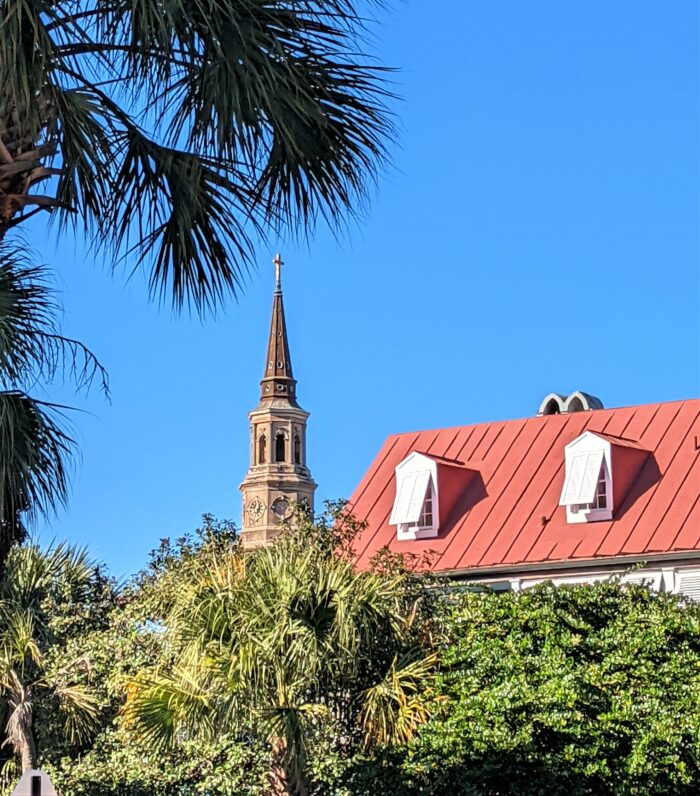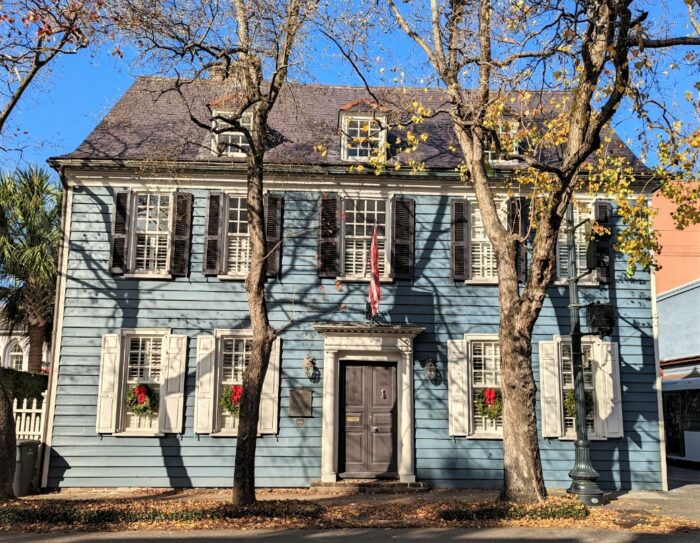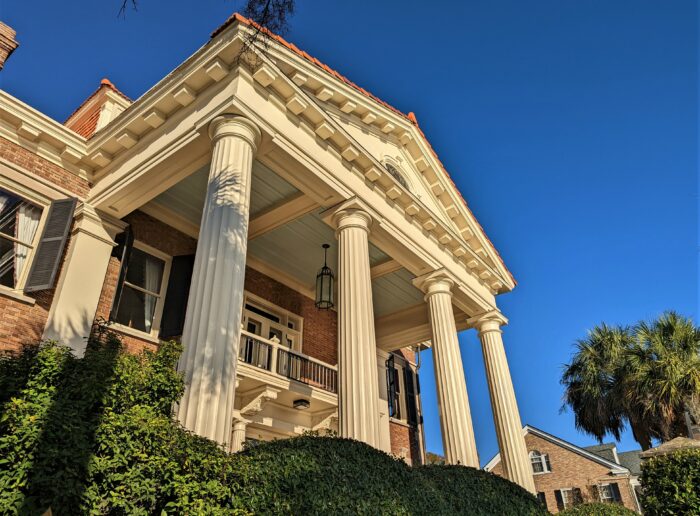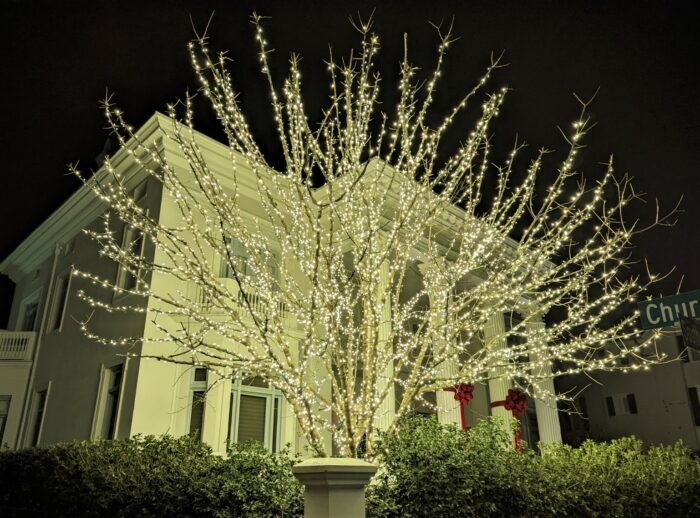It’s always a pleasure when you get a peak of St. Philip’s Church steeple. In addition to serving the church since it was added in 1848-1850, for 22 years (from 1893-1915) this steeple served as the rear tower of the set of range lighthouses used to guide sailors into Charleston Harbor. It is one of only two church steeples to have been used this way. Pretty cool.
Lining
The John Lining House on Broad Street is believed to be the oldest frame house in Charleston. It was built sometime before 1715.
Murray’s First
This handsome house was the first house built on Murray Boulevard — also known as the Low Battery.
The Wall
Perhaps my favorite wall in Charleston. You can find it on the side of a 1783 house on Stoll’s Alley.
The Villa M
The Villa Margherita on South Battery was built in 1892-3. While now a private home, during its life it once served as a hotel. It hosted quite a number of prestigious guests, including the 22 and 24 president of the United States (and two others, as well), Grover Cleveland. He is the only US president to have served non-consecutive terms.
All Aboard
The brown stone in front of the beautiful entrance to a c. 1759 house on Legare Street is one of at least 105 “carriage steps” that be found around downtown Charleston. As the name suggests, they were used for people to climb into carriages or make it easier to mount a horse.
Layers of Charleston
The beautiful Italian Cypress trees on St. Michael’s Alley add a wonderful vertical flair to the Charleston streetscape.
High Battery Beauty
This beautiful house on East Battery was built in 1895. If it had existed in 1861, it would have had a spectacular view of the bombardment of Fort Sumter and the beginning of the American Civil War.
Queen Anne
This 1904 Queen Anne style house on Bennett Street was sold last year (for $2,290,000) and received a beautiful makeover. It is located across the street from Cannon Park and has a nice view of the columns remaining from the fire that destroyed the Charleston Museum.
Longitude Lane
A view towards Church Street on Longitude Lane. A Revolutionary War cannon was once discovered in Longitude Lane, which was later mounted in the middle of the alley to prevent dray carriages from entering this narrow part of the alley and damaging the houses. The City eventually removed it and placed it in White Point Garden, where it can be found today. The fight between the residents of Longitude Lane and the City over its removal became known as the “Battle of Longitude Lane.“
- « Previous Page
- 1
- …
- 10
- 11
- 12
- 13
- 14
- …
- 188
- Next Page »









